

Every stone and bowl is individually made from a leaf.
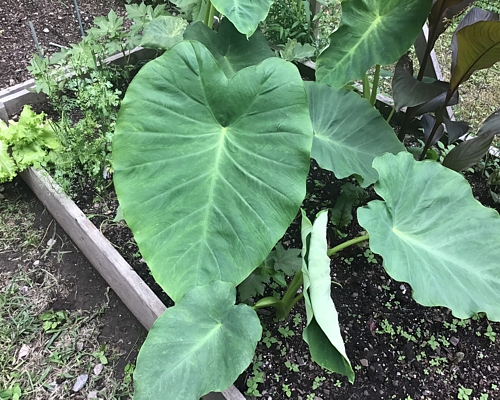
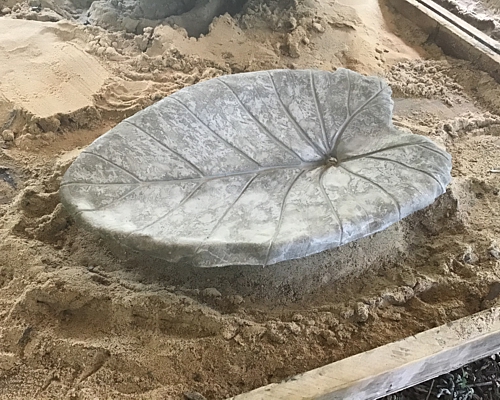
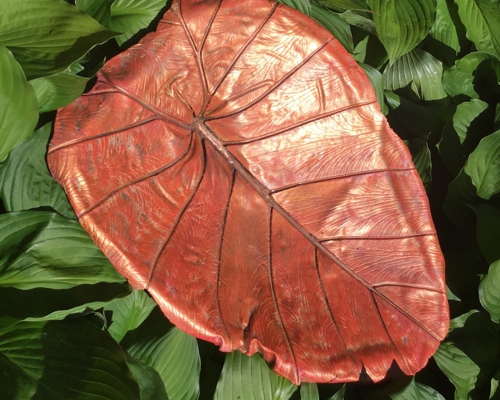
Rhubarb is the most commonly used because of variation in size, durability during casting and most importantly, the vein structure on the underside of the leaf. Skunk Cabbage, Hosta and Swiss Chard have their own characteristics and are used when available.
After the leaves are harvested and used for flat stones, they are placed underside up in a smooth, dampened sand box. Leaves for bowls and bird baths are draped over a bowl packed in dampened sand. For every piece, leaf edges are slightly curved and lifted to form a small barrier to give a defined edge.
Portland cement is spread over the leaves.
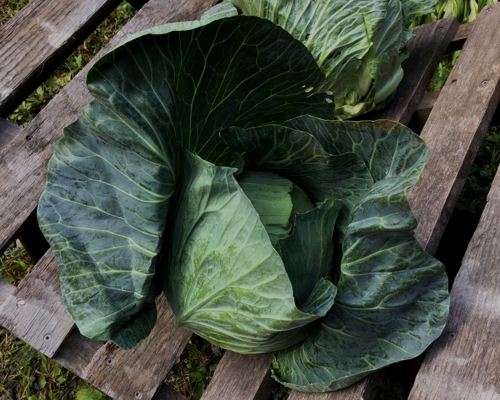
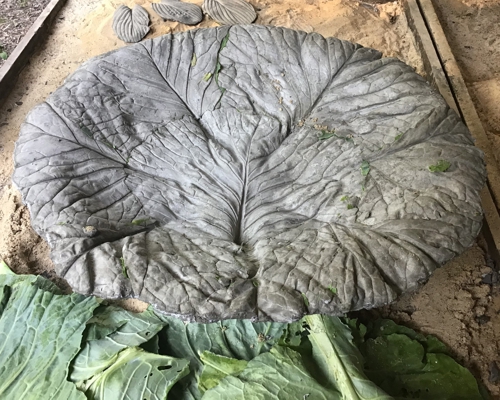
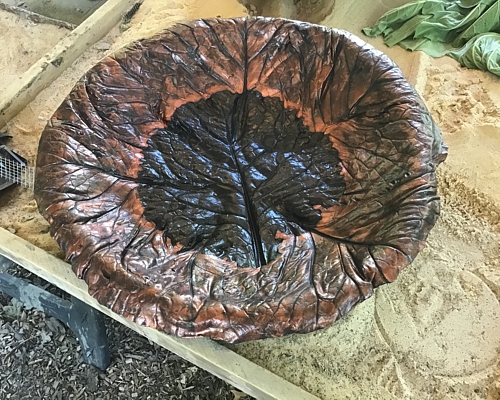
Each piece is then reinforced with 24 gauge wire strips for strengthening; a second coat of cement is applied. After the cement cures for a few hours, each piece is “floated”, a process to smooth ripples and give as even a finish as possible.
After curing for a day, the leaves are pulled from the cast piece. Veins are rid of any leaf residue before eliminating rough edges by hand with a dremel.
A black cement sealer is applied to the bottom of each piece and after a day of drying, a coat is applied to the top.
The color selection for finishing is always a challenge. I use over 45 colors, sometimes only one, sometimes three, depending on the stone and the desired finish. A coat of Valspar is sprayed to set and protect colors.